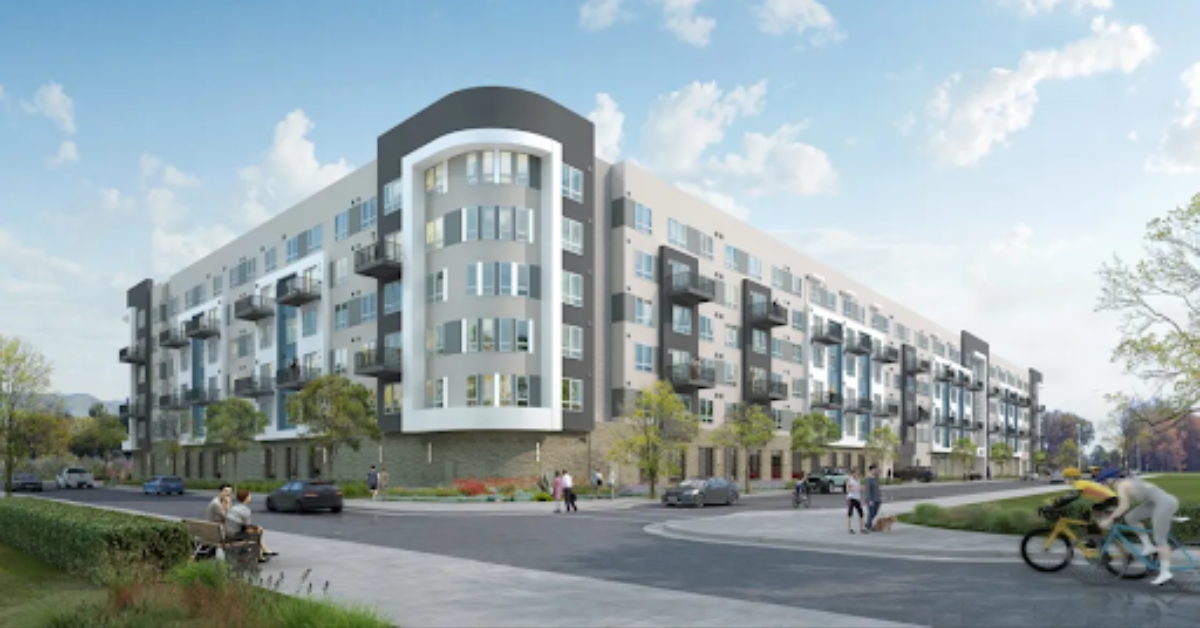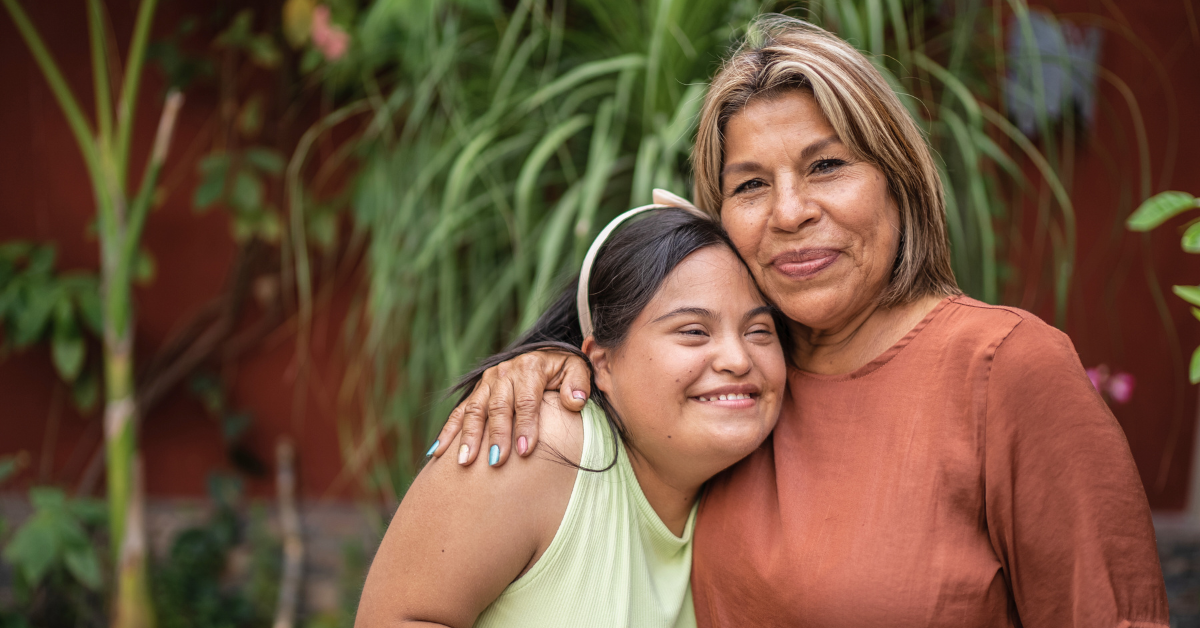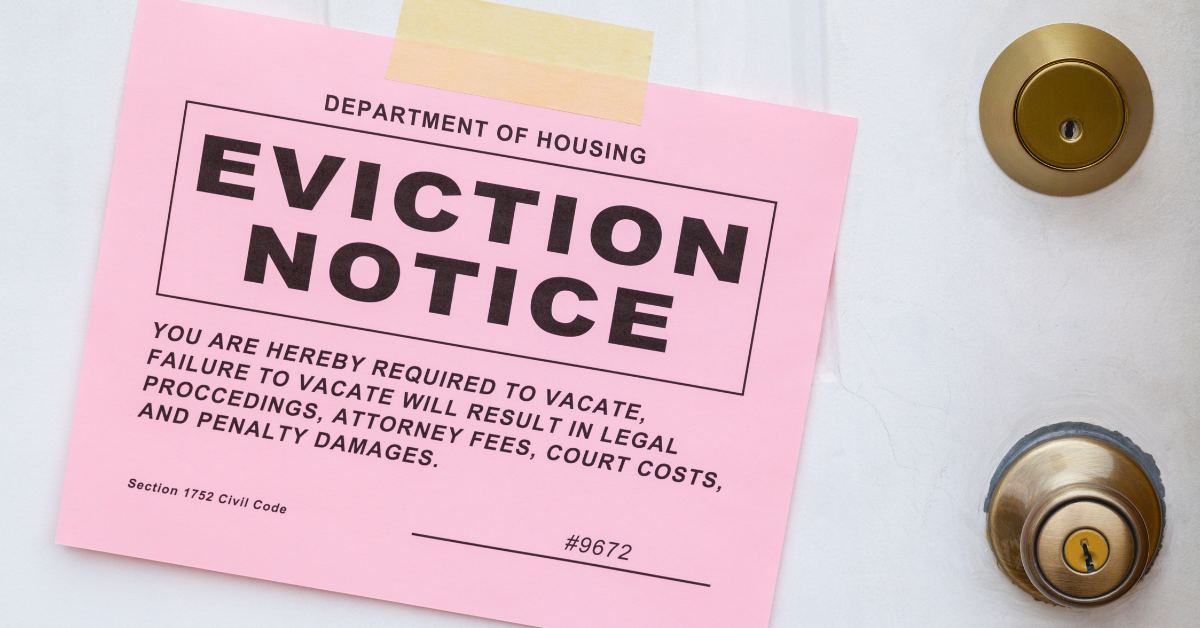20% Housing Funds – See Low- and Moderate-Income Housing Fund.
ABAG – See Association of Bay Area Governments.
Accessory Dwelling Unit (ADU) – A self-contained residential unit located on the same lot as, but separate from, the primary unit, with a separate entrance, kitchen, and bathroom. Also sometimes called a secondary unit, granny unit, in-law unit, or backyard cottage.
ADU – See Accessory Dwelling Unit.
Affordability Restrictions – The requirements imposed by a public agency that housing units remain affordable to extremely low-, very low-, low-, or moderate-income households for a specified number of years.
Affordable Housing – According to federal law, housing in which a household spends no more than 30% of its gross monthly income for: (a) rent and utilities; or (b) mortgage-loan principal and interest, property taxes, insurance, utilities, and homeowner association dues (if any).
Affordable Housing Program (AHP) – Loans for affordable rental housing development made by the Federal Home Loan Bank, with repayment not needed if affordability maintained for a prescribed period.
Amortizing Loan – A loan that repaid by regular principal-plus-interest payments sized so that the loan is fully repaid by the end its term. In real estate transactions, the term of the loan is typically 30 years.
Appraisal – A report made by a qualified person setting forth an opinion or estimate of value. The term also refers to the process by which this estimate is obtained.
Appraised Value – An opinion of value reached by an appraiser based upon knowledge, experience, and a study of pertinent data.
Area Median Income (AMI) – The median income of each county or adjacent counties based on all wage earners in the area, published separately by HUD and HCD to determine household eligibility for various federal, State, and State-governed housing programs, and updated annually. The basic AMI is the income level for a four-person household, around which is constructed a table of higher and lower incomes and smaller and larger household sizes. Other income levels are expressed in percentages of the median income (for instance, Extremely Low-Income is <30% of AMI) adjusted for household size. For the current table of income levels for Santa Clara County, click here.
Association of Bay Area Governments (ABAG) – The “council of governments” (COG) and regional planning agency for the nine counties bordering San Francisco and San Pablo Bays – Alameda, Contra Costa, Marin, Napa, San Francisco, San Mateo, Santa Clara, Solano, and Sonoma – and the 101 incorporated cities and towns in those counties.
BAHFA – See Bay Area Housing Finance Authority
Bay Area Housing Finance Authority (BAHFA) – BAHFA was created by the State Legislature in 2019 to support efforts in the Bay Area to protect tenants and communities struggling with housing instability; and the production and preservation of affordable housing. BAHFA was given the authority to fund this work by placing new revenue options on the ballot.
BART – See Bay Area Rapid Transit District
Bay Area Rapid Transit District – The governmental agency – whose boundaries are coterminous with the boundaries of Alameda and Contra Costa Counties and the City and County of San Francisco – that operates heavy rail transit service in and between those three jurisdictions, to San Francisco International Airport, and, beginning in 2020, in Santa Clara County.
Below Market Rate (BMR) – A title commonly attached to local programs that make housing available to lower- and moderate-income households at costs below prevailing market rates. The term can include affordable units produced under an inclusionary housing scheme or produced with subsidy loans.
California Debt Limit Allocation Committee (CDLAC) – Staffed by the State Treasurer’s Office, this committee makes allocations of authority to issue tax-exempt, private activity bonds from the limited, annual state-wide pool for such bonds authorized by federal law. Examples of such private activities include privately owned affordable housing developments and hospitals.
California Department of Housing and Community Development (HCD) – Agency that provides housing and planning information and guidance, state bond funds, low-interest loans and grants for housing development and rehabilitation. Oversees the annual Housing Element review process to ensure that Housing Elements are in compliance with state law.
California Environmental Quality Act (CEQA) – A state law under which the potential impacts of “projects” on the physical environment must be evaluated prior to project approval. “Project” includes both buildings and alterations of the natural land form as well as adoption or amendment to regulations governing such projects, including zoning laws and General Plans. See also Negative Declaration and Environmental Impact Report.
California Tax Credit Allocation Committee (CTCAC or TCAC) – Staffed by the State Treasurer’s Office, this committee makes allocations of the authorization to use the limited, statewide pool of federal and state Low-Income Housing Tax Credits authorized by federal and State law.
CASA – A shorthand reference (though not an acronym) to the Committee to House the Bay Area.
CDBG – See Community Development Block Grant.
CDLAC – See California Debt Limit Allocation Committee.
CEQA – See California Environment Quality Act.
Commercial Linkage Fee – A fee imposed by a city or county on construction of non-residential projects to finance the development of affordable housing for the lower- and moderate-income wage earners in jobs indirectly created by the new jobs in the subject non-residential development.
Conditional Loan – A loan that is forgivable if certain conditions are met (e.g., compliance with an affordability restriction for the full length of its term).
Committee to House the Bay Area – Created by the MTC Board in 2016 for the purpose of developing a comprehensive regional approach by identifying game-changing regional solutions that address the region’s chronic housing challenges, with a focus on supply, affordability at all income levels, and preservation/anti-displacement.
Community Development Block Grant (CDBG) – Under Title I of the U.S. Housing and Community Development Act of 1974, eight former categorical grant and loan programs were replaced by a system of unified block grants under which communities over 50,000 people are entitled to receive funding while other communities may apply for discretionary funding. Administered by HUD, the purpose of the CDBG program is to encourage more broadly conceived community development projects and expand housing opportunities for low- and moderate-income persons.
Community Land Trust – A nonprofit corporation that develops and stewards affordable housing, community gardens, civic buildings, commercial spaces, or other community assets on behalf of a community. “CLTs” balance the needs of individuals to access land and maintain security of tenure with a community’s need to maintain affordability, economic diversity, and local access to essential services.
Construction Costs – Broadly, all costs incurred in bringing a building to completion (primarily labor and materials costs), not including land acquisition, financing, sales costs or other soft costs.
CTCAC – See California Tax Credit Allocation Committee.
Chronically Homeless – Defined by HUD as someone who has experienced homelessness for a year or longer, or who has experienced at least four episodes of homelessness in the last three years, and also has a condition that prevents them from maintaining work or housing. This definition applies to individuals as well as heads of household who meet the definition.
Deed of Trust – A legal document, filed with the County Recorder, which memorializes a borrower’s pledge of certain real property or collateral as guarantee for the repayment of a loan. Differs from a mortgage in a number of important respects. For example, instead of two parties to the transaction, there are three: a borrower called the trustor who signs the deed of trust; a neutral party called the trustee, to whom the trustor deeds the property as security for the payment of the debt; and a lender called the beneficiary, the one who benefits from the pledge’s agreement in that, in the event of a default, the trustee can sell the property and transfer the money obtained at the sale to lender as payment of the debt.
Deed Restriction – A limitation placed in a deed limiting or restricting the use of the real property.
Deferred Loan – A loan wherein payment of part or all of the loan is deferred until a later time as specified in the loan.
Disabled Household – Households in which at least one of the residents is an adult with a disability. A person is considered to have a disability if they have a physical, mental, or emotional impairment that (1) is expected to be of indefinite duration; (2) substantially impedes their ability to live independently; and (3) is of such nature that the ability could be improved by more suitable housing conditions (federal definition).
Discretionary Approval – The approval of a land use proposal that involves the decision-maker’s judgement in the freedom to decide what should be done in a particular circumstance. Decision-makers are, for example, a city council in the case of a general plan amendment or a rezoning, or an architectural review board.
EIR – See Environmental Impact Report.
ELI – See Extremely Low-Income.
Entitlement – See Land Use Entitlement.
Environmental Impact Report (EIR)– A document prepared pursuant to the California Environmental Quality Act (CEQA) which evaluates potentially significant impacts on the environment resulting from the physical development of land.
Equity – The interest or value which an owner has in real estate over and above the current indebtedness; usually referred to as the owner’s interest. Proceeds from tax credits invested in an affordable housing project are a form of equity.
Equity Sharing – The generic term for various forms of home financing in which a homeowner shares their property appreciation with another party. The term technically only applies when the other party has an ownership interest in the property.
Extremely Low-Income – Households earning 30% or less of AMI, by household size.
Family – One or more persons occupying a home and living as a single housekeeping unit irrespective of blood relationship, as distinguished from a group occupying a hotel, club, fraternity, or sorority house.
General Plan – A city’s or county’s blueprint for the future development of the community, consisting of seven interrelated “elements.”
Grant – An outright gift of cash with no conditions or stipulations.
Grant Deed – The instrument that transfers ownership of real property from one party to another.
HCD – See California Department Housing and Community Development.
HOME – The HOME Investment Partnerships Act, which is Title II of the National Affordable Housing Act. Grants of these funds are made to local jurisdictions either directly from HUD or indirectly through states and/or county governments.
Homeless – Individuals and families who are: (1) living in a supervised publicly or privately-operated shelter designated to provide temporary living arrangements; or (2) with a primary nighttime residence that is a public or private place not designed for or ordinarily used as a regular sleeping accommodation for human beings, including a car, park, abandoned building, bus or train station, airport, or camping ground.
Household – All persons, whether related or unrelated, living in a housing unit.
Housing Code – Standards in state law that ensure that maintenance and improvement of housing meets accepted standards and is adequate for occupancy.
Housing Element – The part of a city’s or a county’s general plan that details how the jurisdiction will meet the projected demand for new housing development.
Housing First – A homeless assistance approach that prioritizes providing people experiencing homelessness with permanent housing as quickly as possible, and then providing supportive services as needed.
HUD – See U.S. Department of Housing and Urban Development.
Impact Fees – Fees imposed on new development that are used to pay for the infrastructure or affordable housing needs generated by that development.
Inclusionary Zoning – A requirement that a certain percentage of units in new housing developments be made affordable to lower- and/or moderate-income households.
In-Lieu Fee – A monetary payment made instead of meeting a regulatory requirement. Commonly used to refer to a fee paid by a developer who does not provide an otherwise required affordable housing unit under an inclusionary housing program.
Junior ADU – An Accessory Dwelling Unit that is typically attached to the primary residence and does not include complete facilities (e.g., less than a complete kitchen).
Land Use Entitlement – Discretionary permits governed by a locality’s zoning, subdivision, or other local code necessary for development of real property.
LIHTC – See Low-Income Housing Tax Credits.
Loan-to-Value Ratio (LTV) – The relationship between the amount of the mortgage loan and the appraised value of the security, expressed as a percentage of the appraised value.
Low-Income (LI) – Households earning between 50% and 80% of AMI, by household size.
Low-Income Housing Tax Credits (LIHTC or Tax Credits) – A reduction in an entity’s federal and/or state tax obligation granted in exchange for investing equity in lower-income housing developments (the federal government and some states also provide tax credits for investments in projects involving the preservation of historic properties).
Low- and Moderate-Income Housing Fund (LMIHF) – 20% of redevelopment tax increment funds that by state law were to be allocated to increasing, improving, and preserving the supply of affordable housing for lower- and moderate-income households. No longer valid since the demise of redevelopment agencies.
Low- and Moderate-Income Housing Asset Fund – Repayments from development loans that were made out of the LIMHF, to be used for increasing, improving, and preserving the supply of affordable housing for lower-income households.
LTV – See Loan-to-Value Ratio.
Metropolitan Transportation Commission (MTC) – The regional transportation planning, financing, and coordinating agency for the nine-county San Francisco Bay Area.
Ministerial Approval – The mandatory approval of a land use proposal if it meets objective, written criteria without any ability of the decision-maker to apply independent judgement. Historically, this applied only to Building Permits, though with the passage of SB 35, it can now apply to zoning permits that were previously considered to be discretionary. Decision-makers are, for example, a planning commission in the case of a conditional use permit, or a planning director in the case of a site development permit.
Missing Middle – This term has two meanings: (1) housing that is naturally more affordable because of its density, yet blends in well with traditional single-family neighborhoods, including duplexes, fourplexes, courtyard apartments, live-work spaces, townhomes, ADUS, and “mansion homes” where single-family homes are re-envisioned to include multiple units; and (2) those whose incomes are too high to qualify for subsidized rental housing that is restricted to households earning very low- and low-income wages, but whose incomes are too low to afford market-rate housing without exceeding 30% of their incomes.
Moderate-Income (Mod) – Households earning between 80% and 120% of AMI, by household size.
MTC – See Metropolitan Transportation Commission.
Naturally Occurring Affordable Housing (NOAH)– Rental housing that is not subject to an affordability restriction but is nonetheless relatively affordable because of age, location, size, or type of construction. A recent example of a NOAH alternative is ADUs, which, due to their smaller size are more naturally affordable. Other examples include older, garden-style apartments and smaller properties – such as four- or six-plexes or even older single-family homes for rent. Some people mistakenly call poorly maintained market-rate housing naturally affordable, however this is simply housing that has suffered from a lack of adequate investment by the landlord and as a result there is nothing natural about it.
ND – See Negative Declaration.
Negative Declaration (ND) – A statement that a project involving physical development of land will not result in any significant effects on the environment.
NOFA – See Notice of Funding Availability.
Notice of Completion – Notice recorded after completion of construction and final inspections for Building Code compliance.
Notice of Funding Available (NOFA) – An announcement by a public agency that a specified amount of funding is available for certain kinds of projects to be loaned or granted to affordable housing developers. The process for awarding funding can be first-come, first- served or a competitive one based on points achieved in various rating categories.
Offsite Improvements – Improvements outside the boundaries of a property (including improvements within adjacent street rights of way as well as more distant streets, sewers, or other infrastructure) which enhance its value and are often required as a condition of property development to offset that project’s impacts.
Onsite Improvements – Any construction of buildings or other improvements within the boundaries of a property which increases its value.
Overcrowded – A housing unit containing more people than is permitted by various laws. For example, the census defines an overcrowded household as one in which there is more than one person per room.
Permanent Supportive Housing – Housing that combines non-time-limited affordable housing assistance with wrap-around health care and other supportive services for people who have experienced homelessness or are otherwise unstably housed, as well as other people with disabilities.
Private-Activity Bonds – Tax-exempt debt issued by a public agency to finance a non-governmental facility, such as affordable housing or hospitals. Such bonds are essentially amortizing loans, typically paid off in 30 years, and in the case of affordable housing, repayment is made out of a project’s rent and other revenue. Federal law limits, on a state-by-state basis, how much private-activity bonding authority can be awarded every year. The Debt Limit Allocation Committee determines which projects will be award bonding authority in California.
Private Sector – Non-governmental, private, for-profit businesses and non-profit organizations.
Project-Based Section 8 – See Section 8.
Rapid-Rehousing – Rapid-Rehousing and prevention services are effective intervention methods for individuals and families who have recently become homeless or who are at risk of homelessness.
Regional Housing Need Allocation (RHNA) – The State-mandated process to identify the total number of housing units (by affordability level) that each jurisdiction must accommodate in its Housing Element.
Rehabilitation – The process of returning a property to a state of utility, through repair or alteration.
Replacement Housing – Housing that a public agency must cause to be produced to replace housing destroyed by public action.
Residual Receipts Loan – A loan that is not amortizing, for which repayment is made in increments from an affordable housing project’s rent and other revenue that exceeds the amount necessary to make amortizing debt payments and meet operating costs. Because such a loan is not amortizing, it will likely not be fully repaid during the term of the loan. Affordable housing financing issued by public agencies is typically in this form.
RHNA – See Regional Housing Need Allocation.
Second Unit – See Accessory Dwelling Unit.
Section 8 – Federal rent subsidies for lower income households administered by a local housing authority, which take one of two forms. A portable voucher is one awarded to a household that it can take with it if it moves from one property to another. In Santa Clara County, as elsewhere, there is a long waiting list of applicants for such vouchers. Project-based Section 8 is assigned to a particular housing unit that benefits whoever occupies that unit for the length of their tenure. The amount of subsidy is the difference between 30% of the tenant’s income and an annually adjusted “fair market rent” adjusted for unit size.
Senior Household – One- or two-person households containing a person of at least a certain age (typically 62 years old).
Single-Room Occupancy – A form of housing that is typically aimed at residents with low or minimal incomes. In some cases, an SRO “units” nothing but a bedrooms that share kitchen and bath facilities with others in the building. In other cases, an SRO unit is complete with its own bath and cooking facilities, so that its occupant can living independently.
Soft Money – Any form of affordable housing development financing that is not an amortizing loan or private-activity bond, such as a grant, a conditional loan, or a residual receipts loan.
SRO – See Single-Room Occupancy
Substandard Unit – In general, any unit that suffers from some type of physical defect, such as electrical wiring that is not up to code or lack of plumbing. There is no common definition of “substandard” housing among the federal, state, or local levels.
Successor Housing Agency – An entity which assumes the affordable housing assets and functions once performed by a former redevelopment agency. Typically, the Successor Agency is the city that had originally formed the redevelopment agency.
Tax Credits – A feature of federal tax law (and some State tax laws, including California’s) that gives tax breaks for investment in developments that meet some public policy objective. Examples include: Energy, for solar and wind power projects; Historic, for the preservation of historic buildings; New Market, for investment in low-income communities; and Low-Income Housing, for the development of units affordable to lower-income households. The proceeds from tax credits are in the form of equity, not loans. The tax credit investor becomes a limited partner in the deal owning 99+% of the project during the “compliance period” (which varies between the various programs), at the end of which, 100% ownership reverts to the managing general partner. Federal law limits, on a state-by-state basis, how many tax credits can be awarded every year. The Tax Credit Allocation Commission determines which projects will be award credits in California.
Tax Increment – That portion of property taxes collected on assessed valuation over and above the valuation in a baseline year.
TCAC – See California Tax Credit Allocation Committee.
TOC – See Transit Oriented Communities
TOD – See Transit-Oriented Development.
Transit-Oriented Communities (TOC) – Similar to TOD, but specifically applied by VTA to the environs of future BART stations.
Transit-Oriented Development (TOD) – High-density residential and non-residential development located near rail transit stations and stops along bus lines with short headways that encourages the use of transit for commuting rather than private automobiles.
U.S. Department of Housing and Urban Development (HUD) – Established by the Housing and Urban Development Act of 1965 to supersede the Housing and Home Finance Agency. Responsible for the implementation and administration of government housing and urban development programs including community planning and development, housing production and mortgage credit (FHA), equal opportunity in housing, research, and technology.
Valley Transportation Authority (VTA) – The Santa Clara Valley Transportation Authority is a governmental agency that: operates public transit systems in Santa Clara County, including bus and light rail lines; is responsible for the construction of BART stations in Santa Clara County that will be operated by BART; and making various improvements to County expressways and State highways in the County.
VTA – See Valley Transportation Authority
Very Low-Income (VLI) – Households earning between 30% and 50% of AMI, by household size. In some contexts, also includes ELI.
Zoning – A body of regulations adopted by a city or a county that governs land use, dividing up the jurisdiction’s territory into residential, commercial, industrial, and other districts, in which various uses are allowed by right or with the issuance of a use permit, and in which standards for such physical aspects as setbacks from property lines, building heights, and parking ratios are set forth.



